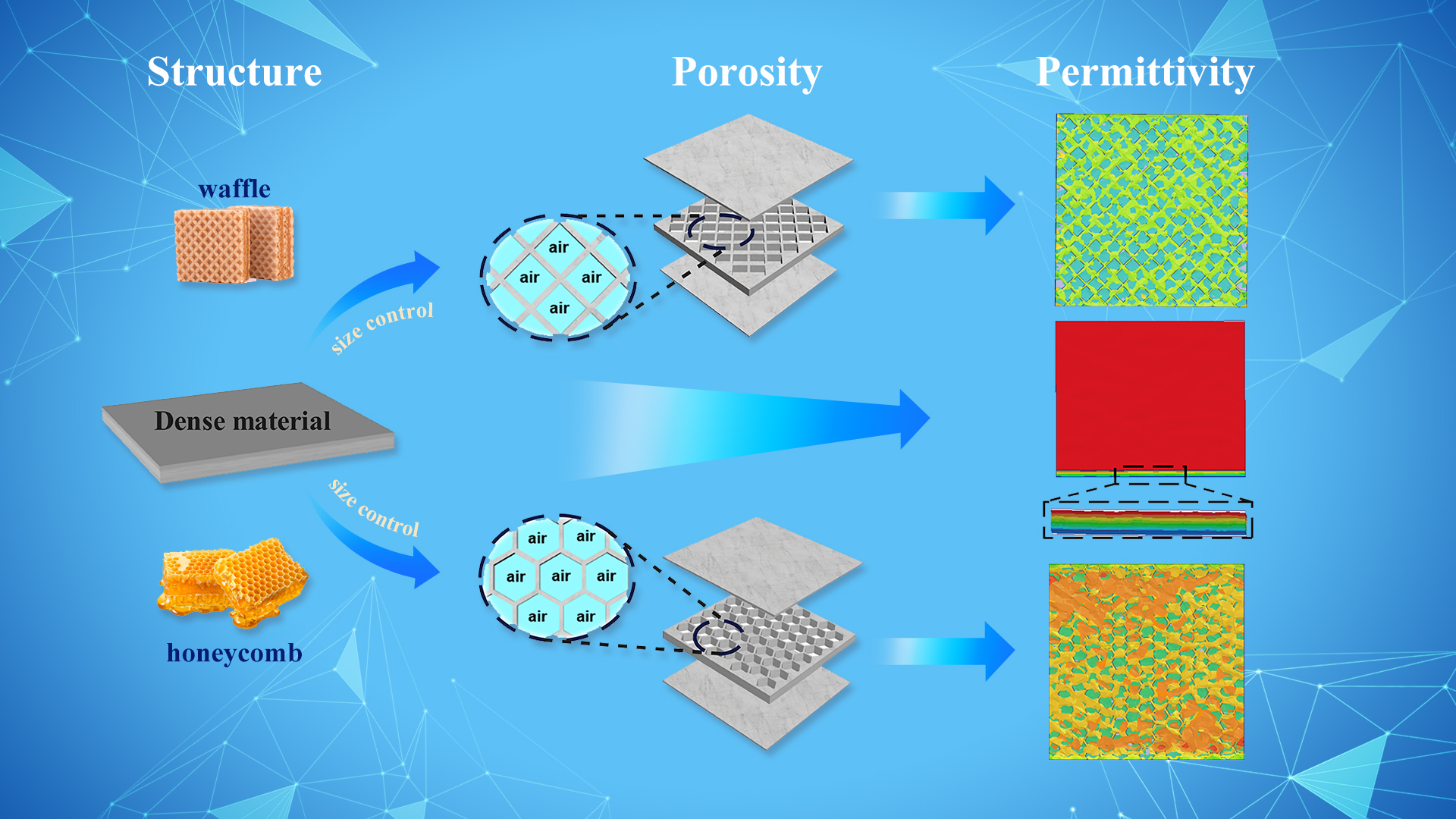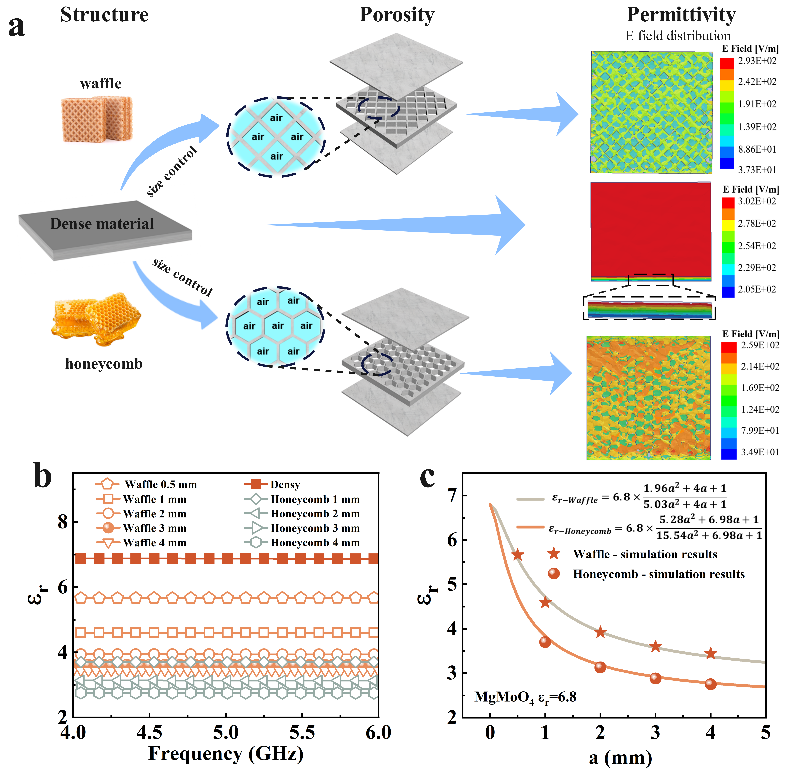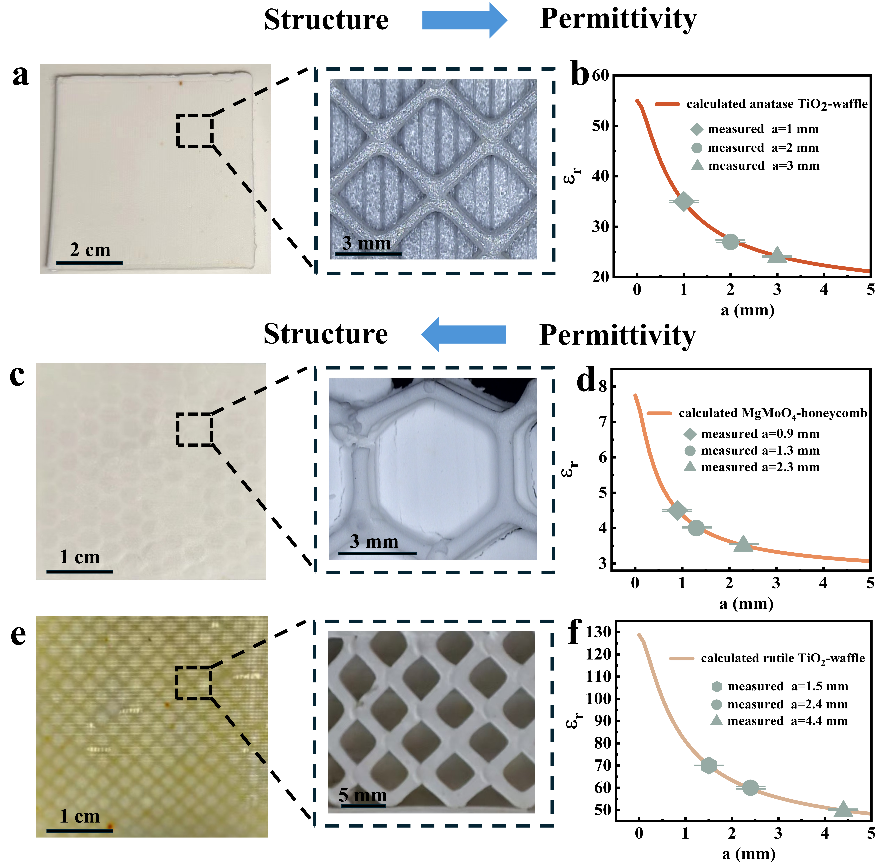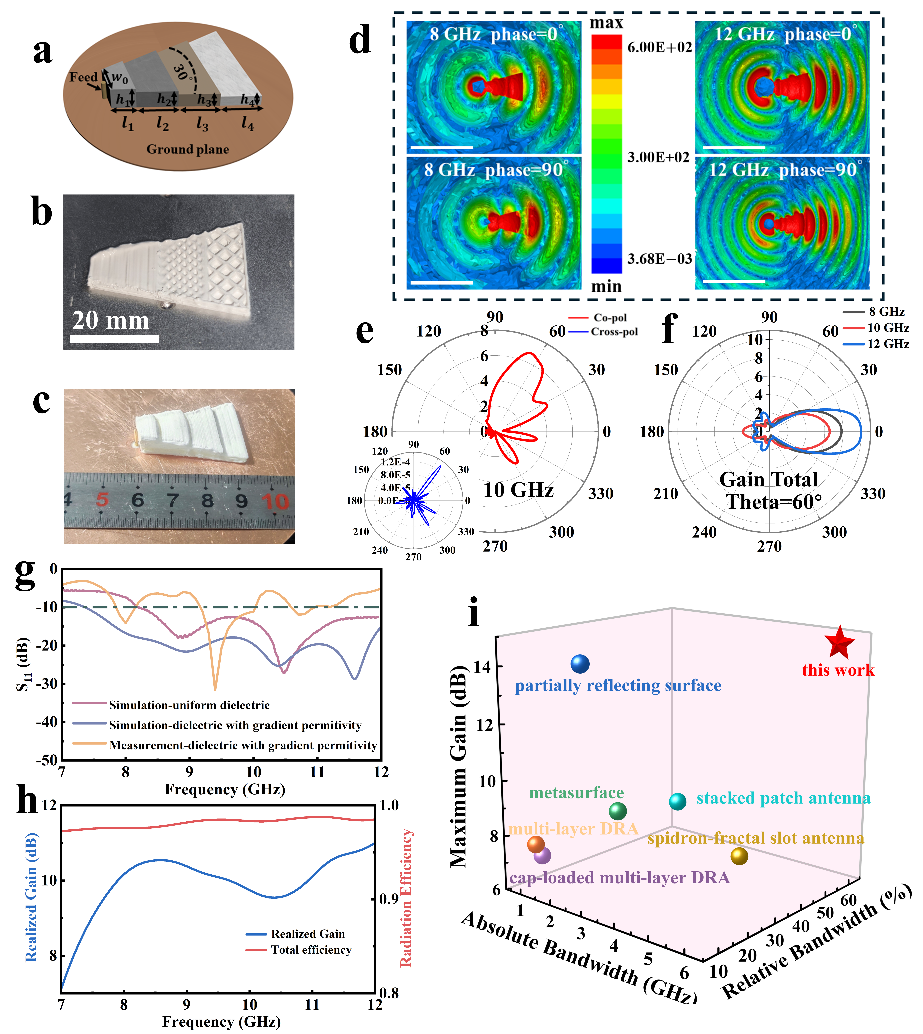With the rapid development of 5G, millimeter-wave communication, and radar technologies, there is an increasing demand for precise control over the dielectric properties of materials. Traditional materials rely heavily on chemical composition and crystal structure for their permittivity, making flexible adjustment challenging.

A research team led by Chair Professor Hong Wang from the Department of Materials Science and Engineering at the Southern University of Science and Technology (SUSTech) has developed a gradient dielectric metamaterial with designable permittivity, which was accurately fabricated using 3D printing technology. This material demonstrates exceptional broadband and high-gain performance in X-band dielectric resonator antennas, offering a novel solution for the design of next-generation advanced electronic devices.
Their findings have been published in the top-tier materials science journal Advanced Functional Materials, under the title “Graded Dielectric Metamaterial with Designable Permittivity Fabricated by 3D Printing.”
The researchers innovatively designed metamaterial unit cells with periodic pore structures—such as waffle and honeycomb patterns—and, combined with effective medium theory, established a mathematical model linking permittivity to geometric structural parameters. This enables accurate prediction and tuning of the material’s permittivity.

Figure 1. Structural models of the metamaterial and comparison between simulated and calculated permittivity
Using Direct Ink Writing (DIW) 3D printing technology, the team fabricated metamaterial substrates with various permittivity values based on ceramics such as MgMoO₄ and TiO₂. Experimental results showed that the permittivity of the prepared materials closely matched theoretical predictions, with errors controlled within 5%, demonstrating high reliability and repeatability.

Figure 2. Fabrication of the metamaterial and permittivity testing
Crucially, they applied this technology to the design of an X-band dielectric resonator antenna. By constructing a dielectric block with a gradient in permittivity, the antenna’s operating bandwidth and gain significantly improved. The experimental antenna achieved a broadband performance of 6.2 GHz—covering the entire X-band from 8 to 12 GHz—with a gain as high as 14.7 dB, far surpassing traditional designs, which typically achieve only 1.7–4.2 GHz bandwidth. The antenna also maintained stable dielectric performance under high-temperature and high-humidity conditions, showing excellent environmental adaptability.

Figure 3. Dielectric resonator antenna based on designable permittivity
This work not only demonstrates the great potential of 3D printing in the customized manufacturing of functional materials but also provides new insights for the design of high-performance antennas, RF components, and frequency-selective devices.
The co-first authors of the paper are Ph.D. students Xiaoyu Li from SUSTech and Denghao Ma from Xi’an Jiaotong University. Chair Professor Hong Wang is the corresponding author, and SUSTech is the first affiliated institution.
Paper link: https://doi.org/10.1002/adfm.202514533
To read all stories about SUSTech science, subscribe to the monthly SUSTech Newsletter.
Proofread ByAdrian Cremin, Yifei REN
Photo ByDepartment of Materials Science and Engineering